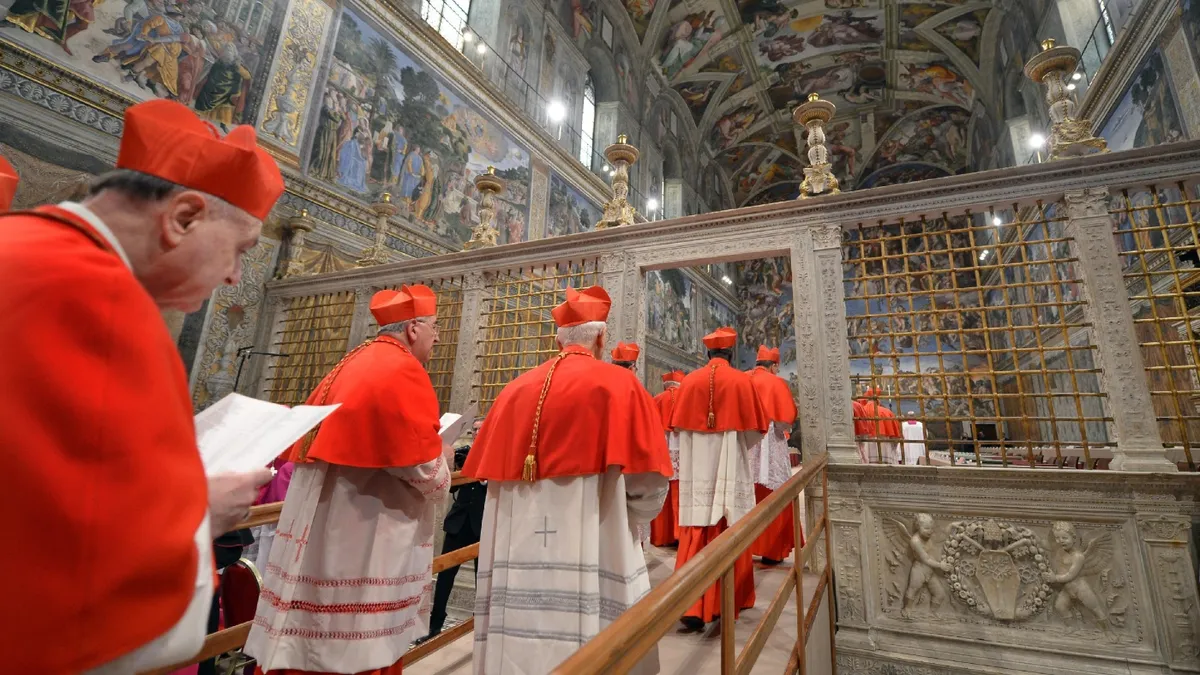
The world is mourning the loss of Pope Francis, who has passed away at the age of 88. His death marks the start of a critical period for the Roman Catholic Church, as the elaborate and historically rich process of selecting a new pope commences. For the latest updates on this unfolding story, stay tuned to our coverage.
One of the most iconic symbols associated with the papal election process is the white smoke that billows from the chimney of the Sistine Chapel. This event signifies the selection of a new pope and ignites celebrations among the approximately 1.4 billion Catholics worldwide. The white smoke is produced by burning ballots cast by the cardinals, and its appearance is a moment of great anticipation for the faithful. Conversely, black smoke indicates that the cardinals will need to cast additional votes.
With the passing of Pope Francis, the focus shifts to the conclave, a gathering of cardinals responsible for electing the next pope. The term "conclave" originates from the Latin phrase meaning "with key," a nod to the 13th-century practice of locking cardinals in a room to ensure they remain focused on their task. As Bry Jensen, host of the Pontifacts podcast, explains, this practice arose from a prolonged vacancy in the papacy that lasted nearly three years in the late 1200s.
During this initial conclave, the cardinals were confined and limited to a diet of only bread and water to expedite their decision-making process. The conclave has since evolved, but the core principle of urgency remains. The current conclave will see cardinals locked away within the Vatican, cut off from the outside world while they deliberate on who will lead the Church.
Upon the death of a pontiff, the camerlengo, a cardinal who acts as the chamberlain, is tasked with declaring the pope deceased and overseeing the Holy See until a successor is appointed. Currently, Cardinal Kevin Farrell holds this position, making him the first American to serve as camerlengo. While there is a legendary account of the camerlengo tapping the deceased pope's forehead with a silver hammer to confirm their passing, this ritual has not been performed since the death of Pope Pius IX in 1878.
Funeral rites for the late pope will be held over a period of nine days, during which the Church mourns and honors his legacy. It is essential for the conclave to commence within 15 to 20 days following a pope's death or resignation. After the announcement of the pope's passing, the dean of the College of Cardinals will convene the cardinal electors at the Vatican, currently numbering 138. Only cardinals under the age of 80 are eligible to participate in the conclave.
During the conclave, cardinals reside at the Domus Sanctae Marthae, a facility adjacent to St. Peter's Basilica, which Pope Francis chose over the more luxurious Apostolic Palace. Described as comparable to a three-star hotel, its purpose is to ensure that cardinals remain focused on their mission rather than becoming comfortable.
The conclave is shrouded in a veil of secrecy, with cardinal electors required to sign an oath that prohibits them from disclosing any information under threat of excommunication. This secrecy adds to the intrigue surrounding the process, as noted by Gregg Gassman, a librarian and Pontifacts podcast editor. The conclave begins with a mass led by the dean of the College of Cardinals, followed by a solemn procession to the Sistine Chapel where the secrecy oath is taken.
Once the oath is completed, a dramatic announcement is made: "Extra omnes," signaling that only the cardinal electors may remain in the chapel. From that moment, all external communication ceases, with the exception of the smoke signals indicating the outcome of their votes.
The voting process begins on the first evening, with the initial round typically serving as an indication of the cardinals' preferences. Subsequent rounds of voting occur twice each morning and afternoon. After each vote, the ballots are bound together, and if no candidate receives the required two-thirds majority, the ballots are burned, producing either white or black smoke depending on the outcome. The Church has transitioned to using chemicals for this purpose, ensuring clarity and avoiding confusion.
Historically, conclaves since the 1900s have been relatively brief, often concluding in under four days. For instance, Pope Francis was elected on the second day of the conclave that chose him. When a candidate emerges victorious, they are asked two critical questions: whether they accept the election and what name they choose as pope. Following this, official documents are prepared, and the new pope is fitted with papal attire.
Finally, the senior cardinal deacon announces "Habemus Papam!" — "We have a pope!" — from the balcony overlooking St. Peter's Square, marking the culmination of the conclave and the start of a new era for the Roman Catholic Church.